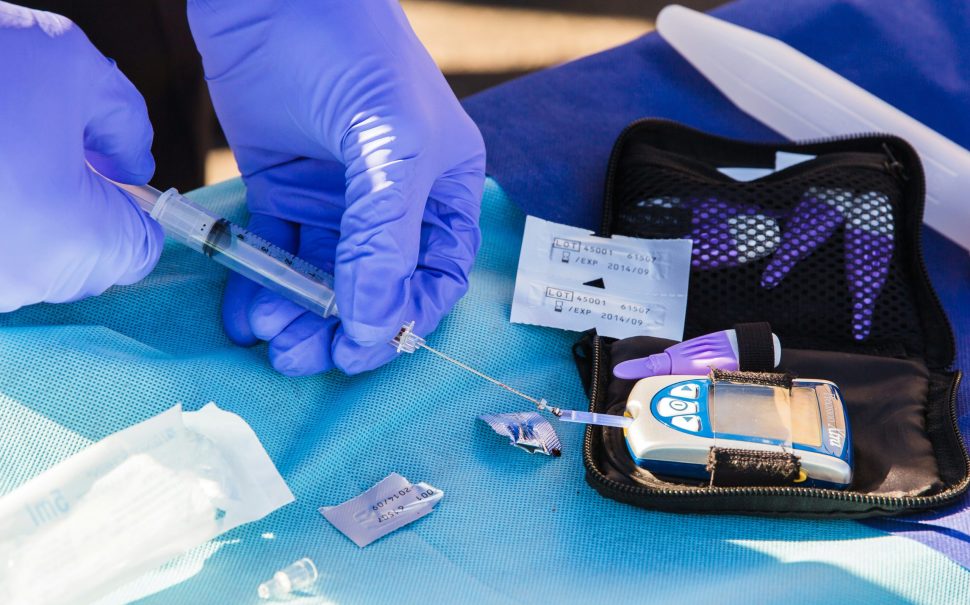A sharp rise in childhood Type 2 diabetes is exposing deep health inequalities across London, according to the latest National Paediatric Diabetes Audit.
London has the highest rates of paediatric Type 2 diabetes in England and Wales, with 7% of young diabetes patients in the region having Type 2, almost double the national average.
Nationally, there has been a 72% increase in the number of children and young people diagnosed with Type 2 diabetes in the past year.
Davina Jean-Jacques, an NHS paediatric diabetes nurse specialist said: “Two years ago we had ten type 2 children on our caseload, we now have 40.
“Type 2 diabetes has a much higher impact on children than adults, so they will have complications much earlier.”
Type 2 diabetes is a chronic condition that can cause serious complications if unmanaged, including heart disease, kidney failure, nerve damage, and vision loss, with early onset raising the risk of faster progression.
Management of the condition involves ongoing treatment, lifestyle changes, and monitoring, which can disrupt school and impact a child’s social and emotional development.
Ethnicity and deprivation contribute to this spike, with London acting as a stark case study of how multiple risk factors converge.
In the capital, more than half of children in the audit are from the two most deprived quintiles, and more than half are from ethnic minority backgrounds, including 17% Asian and 17% Black.
Helen Kirrane, Head of Policy and Campaigns at Diabetes UK, said: “It is deeply concerning that the number of young people diagnosed with type 2 diabetes has continued to rise across the UK in recent years.
“This rise is linked to more people living with overweight and obesity at younger ages, with people from minority ethnic groups and those living in areas of higher deprivation more likely to be affected.”
Research shows that Asian and Black children are more likely to develop diabetes at younger ages and have lower BMIs, driven by genetic and metabolic differences.
HEAL-D (Healthy Eating & Active Lifestyles for Diabetes) is a culturally tailored type 2 diabetes programme for adults of African and Caribbean heritage.
Professor Louise Goff, Chief Investigator of the HEAL-D programme, said: “People of minority ethnic backgrounds adopt a very westernised diet with high sugar intakes, high fat intakes and lots of ultra processed foods, which is associated with driving this early diabetes particularly through the effects of excess weight and excess fat tissue.
“If you look at our public health campaigns, they come from a very white, European, white-centric perspective.
“The posters or adverts trying to provide health promotion just aren’t relevant to a lot of non-white communities. They don’t see them or see the relevance to their life or their culture or their community.”
According to the audit, 94% of children and young people with Type 2 diabetes had a BMI in the overweight or obese range, compared to 42% with Type 1 diabetes, highlighting the strong link between Type 2 diabetes and diet.
Prices of fresh fruit and vegetables continue to rise during the current cost of living crisis, with urban areas dominated by fast food outlets offering cheap but unhealthy meal options.
Professor Goff said: “In inner city urban areas, the cheapest way to get your calories in a day will be something like chicken and chips or a Mars bar or a can of Monster.
“There isn’t the option of buying those higher nutritional quality foods.”
Public health experts point to the ubiquity of junk food advertising in deprived areas and research has linked such advertising to poor diet and obesity, both key risk factors for Type 2 diabetes.
Despite Transport for London’s ban on unhealthy food ads in 2019, children in poorer boroughs remain disproportionately exposed.
According to a March 2024 report by Adfree Cities, 82% of outdoor advertising is concentrated in the poorest half of England and Wales, with people in the most deprived areas exposed to six times more advertising than those in the least deprived.
This includes billboards, buses and public transport spaces – seen by 98% of the UK population each week – and disproportionately features foods high in fat, salt and sugar.
Professor Goff said: “We’ve got advertising and branding of really unhealthy stuff forced into our faces.”
The closure of many youth centres has also taken a toll, with fewer free extra-curricular activities and opportunities for safe physical activities, children in London are significantly less active than previous generations.
Jean-Jacques said: “Children are doing a very small percentage of activity they should be doing to keep healthy for their age. Something needs to change, especially in London.”
Currently, NHS services are stretched and resources are limited meaning they are not well equipped to provide culturally sensitive care.
Jean-Jacques said: “A lot of the diabetes paediatric teams I’ve spoken to are so tired and so stretched.”
Community initiatives and ‘bottom-up’ approaches are key to reducing these inequalities, yet small grassroots organisations struggle to manage big contracts and funding due to structural barriers.
Education is key to empowering communities with the knowledge to make healthier choices, with experts saying that prevention is much more cost-effective than treating complications later on.
Professor Goff said: “Quite often it is the children that educate upwards, and that can be a highly effective way of promoting change in not only those children, but in the older generations as well.”
The NPDA data indicates that the rates of Type 2 diabetes in London’s children are continuing to rise, pointing to widening health inequalities and long-term health complications before many even enter adulthood.





Join the discussion